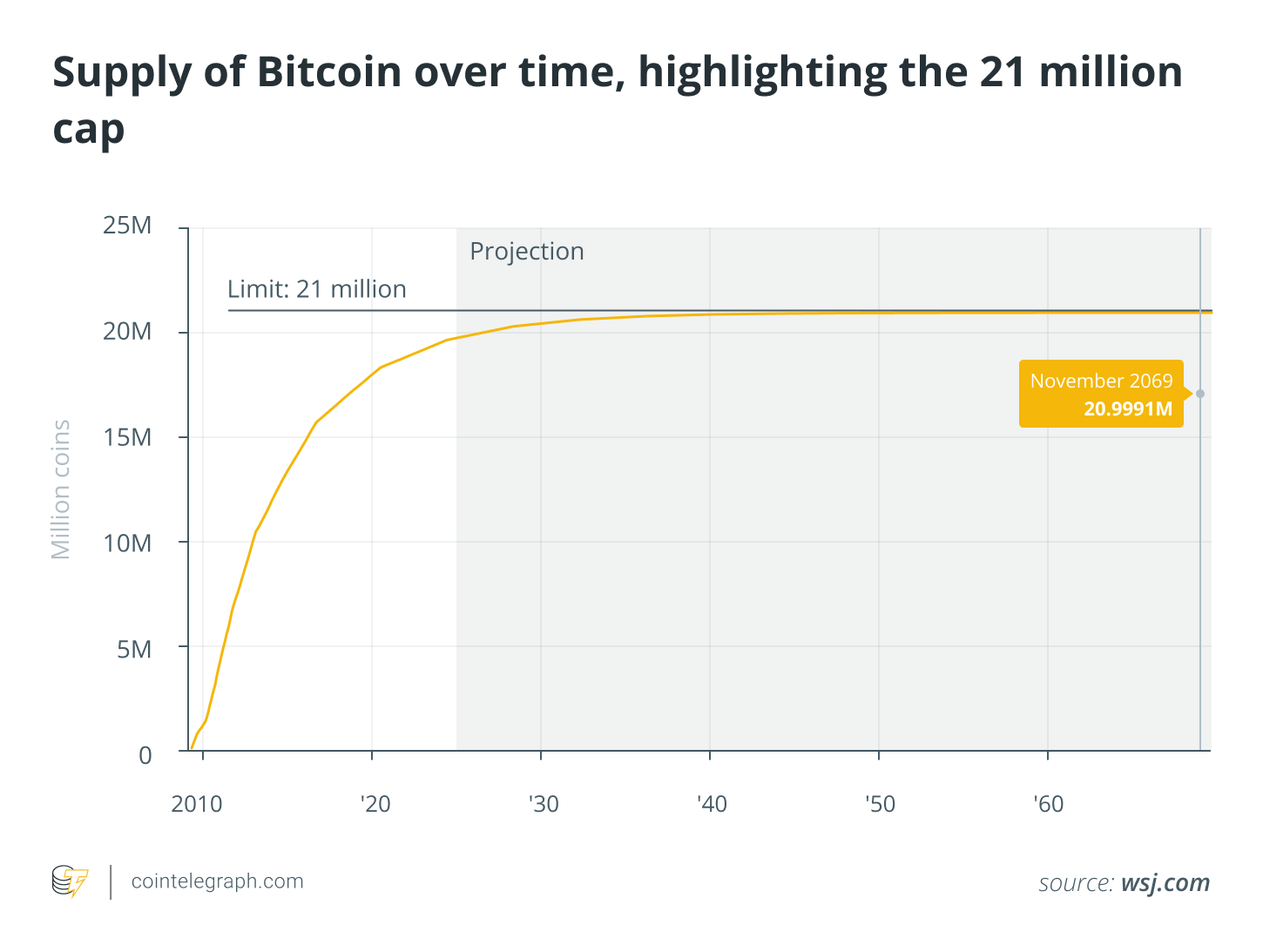
Is the Limit of 21 Million Bitcoins Open to Change?
A discussion on whether Bitcoin's fixed supply cap of 21 million coins can ever be altered and the implications of such a change.
Understanding the Hard Cap
A hard cap defines the utmost supply of any cryptocurrency, which is permanently coded into its blockchain. This restriction fosters scarcity, potentially uplifting the value of individual coins over time.
Using Bitcoin (BTC) as an example, its founder, Satoshi Nakamoto, established a hard cap of 21 million coins. Regardless of demand or mining attempts, the supply will never surpass this figure.
Importance of the Hard Cap
Scarcity plays a significant role in cryptocurrency economics; Bitcoin is often perceived as even more limited than digital gold. In cases where demand escalates, prices may surge since no additional coins can be minted. Altering a cryptocurrency’s core code would be the sole means of expanding its supply, effectively necessitating a reinvention.
In contrast to gold, which could see a price reduction if mining was made readily accessible, Bitcoin’s supply is strictly regulated by its hard cap.
Hard Cap vs. Soft Cap in ICOs
In the realm of initial coin offerings (ICOs), a hard cap refers to the upper limit of funds an event aims to collect, while a soft cap serves as the minimum needed to initiate the project.
The distinction between these caps is crucial for transparency and promotes scarcity within both supply and fundraising limits.
The Significance of Bitcoin’s 21 Million Limit
Bitcoin’s hard cap mirrors its intrinsic value, acting as a digital gold standard. While it’s widely accepted, debates still linger over the possibility of changing this limit. Some argue that if Bitcoin adopts more widespread use, the model might require reconsideration.
Advantages:
- Value Preservation: Bitcoin represents a finite resource, giving it extraordinary value compared to currencies fabricated at will by governments.
- Predictable Growth: The supply expands predictably through events like the halving, which occurs approximately every four years.
- Support from the Community: Bitcoin miners and developers prioritize the unique principles of Bitcoin’s scarcity.
As of 2025, more than 19.8 million BTC are already mined, which leaves less than 1.2 million left to be generated. This defined scarcity contributes significantly to Bitcoin’s present value around $100,000.
Discussions Around Changing the Cap
Although altering the 21 million limit is largely frowned upon, several discussions have arisen over time. Concerns include inflation posing challenges post-mining and maintaining miner motivation through transaction fees. Early Bitcoin pioneer Hal Finney entertained the idea of inflation post-cap but ultimately viewed it as a theoretical notion rather than a viable option.
Moreover, the contentious debates from 2017 showed the difficulties in modifying Bitcoin’s foundational rules—if merely adjusting block size could spur such division, altering the hard cap would incite chaos.
Potential Consequences of Change
Should the hard cap be modified, it would likely lead to a collapse of trust, causing market panic and potential fork scenarios. The Bitcoin community staunchly upholds its principles, ensuring that substantial pushback would occur against such an endeavor. This illustrates why, despite possible improvements to Bitcoin’s network in other sectors, its hard cap remains a fiercely protected aspect.
Quotes:
Nassim Taleb once said, “Bitcoin is the beginning of something great: a currency without a government, something necessary and imperative.”
Andreas Antonopoulos emphasizes, “Bitcoin is not just a currency; it’s a movement. It’s about taking control of your own financial destiny.”
The 21-million cap is not just a numeric threshold; it symbolizes a commitment that the Bitcoin community intends to uphold, with any attempts to change it facing tremendous resistance.


